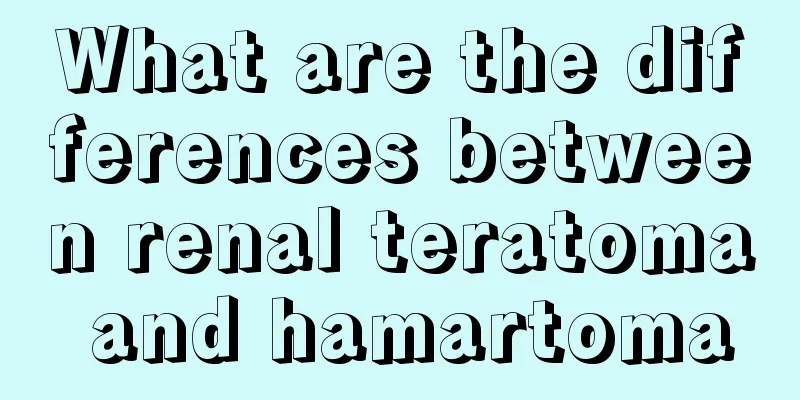What are the differences between renal teratoma and hamartoma

|
Renal teratomas are germ cell tumors arising from ectopic pluripotent stem cells that fail to migrate from the yolk sac endoderm to the urogenital tract during embryogenesis. The difference between hamartomas and normal tissue is that hamartomas grow in a disorganized pattern. Most hamartomas grow slowly at a similar rate to normal tissue. Although they are genetic diseases, they are more common in males than in females. Hamartomas are benign tumors that are made up of abnormal, but not cancerous, cells similar to the tissues they are made of. In some areas of the body, they may not cause any symptoms or even go away with time, while in other areas, they may cause complications. Renal teratomas are rare tumors that can contain mature tissues and organs, including hair, teeth, muscle, and bone. The difference between renal teratoma and hamartoma: 1. Symptoms Hamartomas generally cause no symptoms or discomfort due to pressure on nearby organs and tissues, which can vary depending on the location of the hamartoma. One of the most common "symptoms" is fear, because these tumors can look a lot like cancer when they are found, especially on imaging tests. Renal teratomas may not have any symptoms at first, and when symptoms develop, they may vary depending on the location of the teratoma. Common signs and symptoms of many renal teratomas include: pain, swelling, and bleeding. 2. Diagnostic methods Your doctor may use X-rays, ultrasounds, and CT scans to help diagnose a renal teratoma, and blood tests may also be helpful. The diagnosis of a hamartoma will depend on where it occurs, and since they may look similar to malignancies (cancer) when imaged, a biopsy is often needed to confirm the diagnosis. 3. Treatment options Renal teratomas detected at birth or later are removed surgically, and they must be closely monitored because there is a high chance that they will grow again within three years. If the renal teratoma is malignant, chemotherapy is used at the same time as surgery, and the survival rate is relatively high. Treatment of hamartomas can usually be determined by a combination of imaging tests and fine needle aspiration biopsy, and surgery should be performed for people who have symptoms due to the tumor or for those who still have questions about the diagnosis. Renal teratomas are rare and usually benign. Treatments for cancerous renal teratomas have improved in recent decades so that most cases are curable. A hamartoma is a benign (noncancerous) tumor that does not spread to other parts of the body, but for some people, a hamartoma may signal a genetic mutation that may increase the risk of certain cancers, such as breast and thyroid cancer. |
<<: Drinking too much water can be fatal? 6 tips to prevent bladder cancer
>>: Is renal hamartoma surgery dangerous?
Recommend
How should metastatic lung cancer be treated? Treatment plan for metastatic lung cancer
Lung cancer is very harmful to the patient's ...
Symptoms of teething fever in babies
Many friends with parenting experience know that ...
How to distinguish between a gland and a lump?
Glands are very complex tissues inside the human ...
How to defrost the refrigerator
Now that living conditions are better, almost eve...
Tonsils suppuration, squeeze out the pus yourself
It is well known that many tonsils will become fe...
Drinking water that is not boiled increases the risk of bladder cancer. How to prevent bladder cancer
Bladder cancer is a common urinary system disease...
Is liver cancer contagious? Here's the truth!
Liver cancer has become a disease with a particul...
Can papaya lower blood sugar?
In our daily life, many people habitually skip br...
Who is prone to thyroid cancer
Who is prone to thyroid cancer? Although the inci...
What is the best medicine for fatty liver
The onset of fatty liver is slow, and it is diffi...
What to do if the towel becomes sticky
Towels are one of the more common and necessary h...
What is the best food for kidney deficiency? Diet therapy for kidney deficiency in women
As people's work and life pressures gradually...
How to prevent abdominal distension caused by ovarian cancer?
Experts believe that stomachache and bloating are...
Panax notoginseng stewed chicken is suitable for people
Panax notoginseng stewed chicken is a food made b...
What are the benefits of using tea seed oil on your face?
Young women nowadays will look for various beauty...









